
Another type of "rose" is also ingrained in Argentinian culture-the variety of massive rhodochrosite called "Inca rose." Translucent to opaque and adorned with delicate banding, its colors range from intense rose-red to every shade of pink. Most eye-catching are polished slabs of rare stalactitic Inca rose adorned with their signature patterns of colorful, surreal, concentric rings.
MANGANESE CARBONATE
Rhodochrosite (manganese carbonate, MnCO3) is a member of the calcite group of trigonal carbonates. It has a Mohs hardness of 3.5-4.5, a specific gravity of 3.5-3.6 and, like calcite, perfect, three-directional cleavage. When pure, rhodochrosite is a deep rose-red, a color that calcium and magnesium ions often lighten to pink and zinc ions alter to brownish-yellow.
Although known since antiquity, rhodochrosite was not scientifically described until 1813. Its name stems from the Greek words rhodon, meaning "rose" and chrös, "color."
Rhodochrosite is widely distributed, but uncommon. As a hydrothermal-vein mineral, it occurs primarily as a minor component of multimetal sulfide deposits, with one major exception-Argentina's Capillitas Mining District.
ARGENTINA'S RHODOCHROSITE BONANZA
A remote, 10,000-foot-high mining district in the Andean foothills of northeast Argentina's Catamarca Province, Capillitas is the sole source of Inca rose. This deposit formed seven million years ago when volcanics intruded Paleozoic granite and associated, metal-rich, hydrothermal fluids filled fractures in both the newly emplaced volcanic rock and the surrounding granite.
The Capillitas deposit has 19 known veins, some more than 2,000 feet in length. All consist of rhodochrosite carrying substantial amounts of copper and traces of gold, silver, lead and zinc. The rhodochrosite occurs almost exclusively as banded masses; crystals are rare and less than one-quarter inch in size.
この記事は Rock&Gem Magazine の March 2024 版に掲載されています。
7 日間の Magzter GOLD 無料トライアルを開始して、何千もの厳選されたプレミアム ストーリー、9,000 以上の雑誌や新聞にアクセスしてください。
すでに購読者です ? サインイン
この記事は Rock&Gem Magazine の March 2024 版に掲載されています。
7 日間の Magzter GOLD 無料トライアルを開始して、何千もの厳選されたプレミアム ストーリー、9,000 以上の雑誌や新聞にアクセスしてください。
すでに購読者です? サインイン
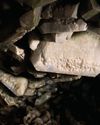
Rockhounding Ohio's Lake Erie Islands
A short ferry boat ride three miles from Ohio’s Lake Erie coastline is South Bass Island, better known as Put-in-Bay or the “Key West of the North.”
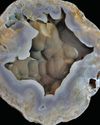
Iowa's Hidden Treasures
Exploring Keokuk Geodes: How They're Made & What's Inside
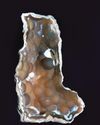
Agatized CORAL
Florida's Collectible State Stone

Rockhounding Florida's Beaches
Beachcombing serene stretches of Florida can reveal fascinating finds like fossilized shark teeth, sea glass, quartz, agate and even coral fragments.
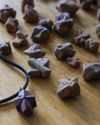
Collecting Staurolite
Hot Spots In Virginia & Georgia
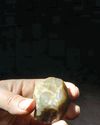
Pecos Valley Diamonds
New Mexico's Ancient Attraction

12 Tips for Rockhounding Tucson's Greatest Shows
Tucson in February becomes the international hub for buying and selling colored gems, rocks, minerals and fossils.

Turquoise in the American Southwest
A Water & Sky Souvenir
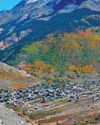
Touring Colorado's MINERAL BELT
It's a Showcase of Mining History & Minerals
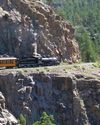
Geology &Colorado's Taurish Traiks
Most of Colorado’s tourist trains today were originally constructed in the late 1800s to serve the state’s lucrative mining operations.